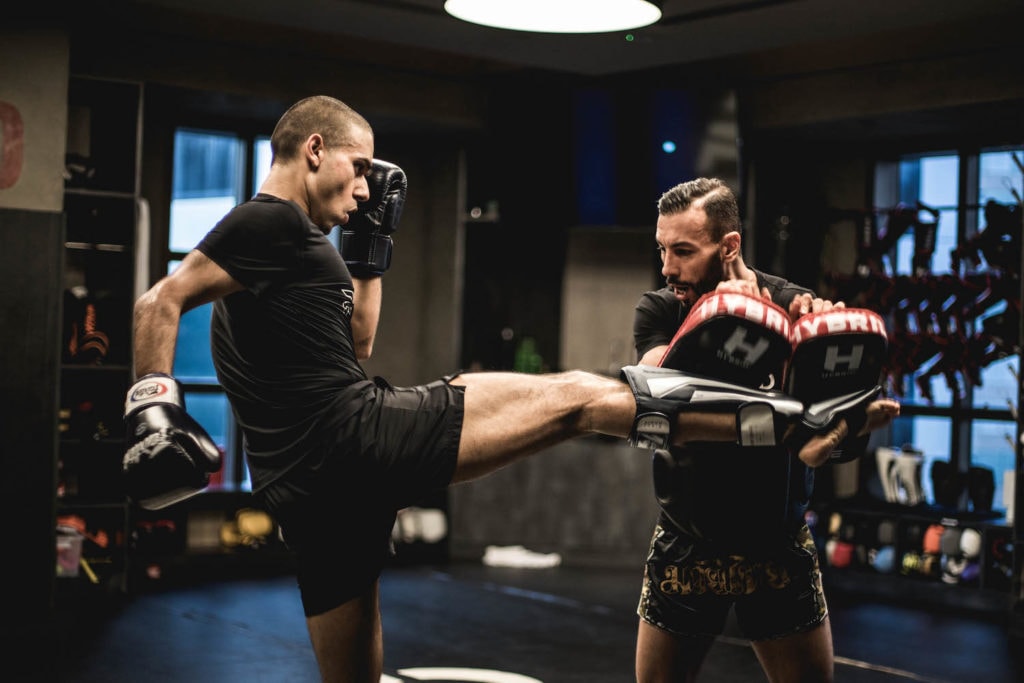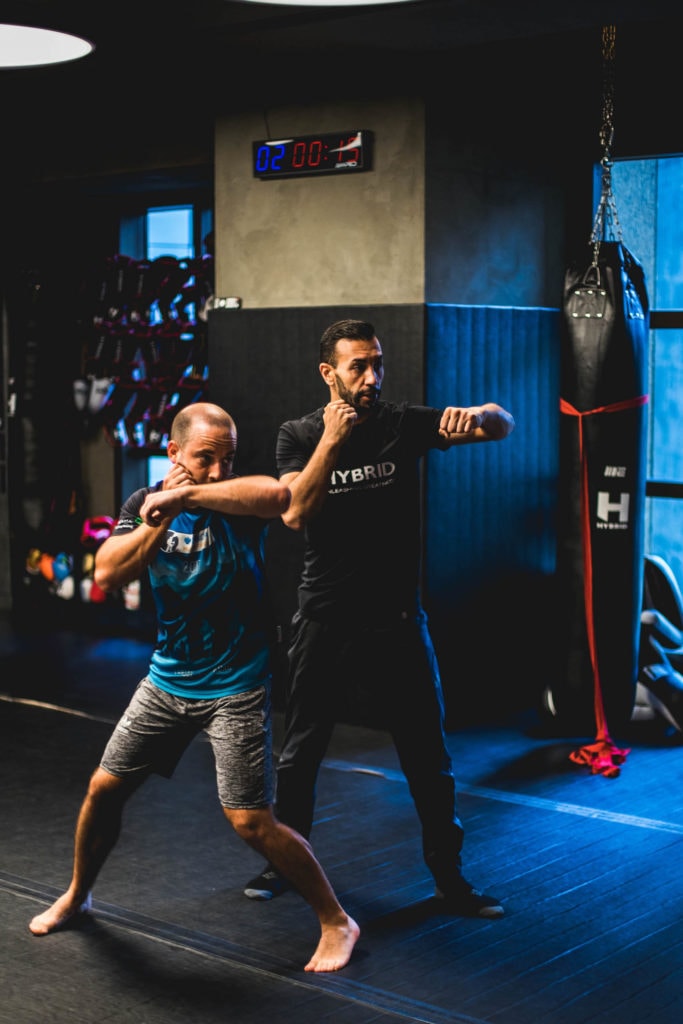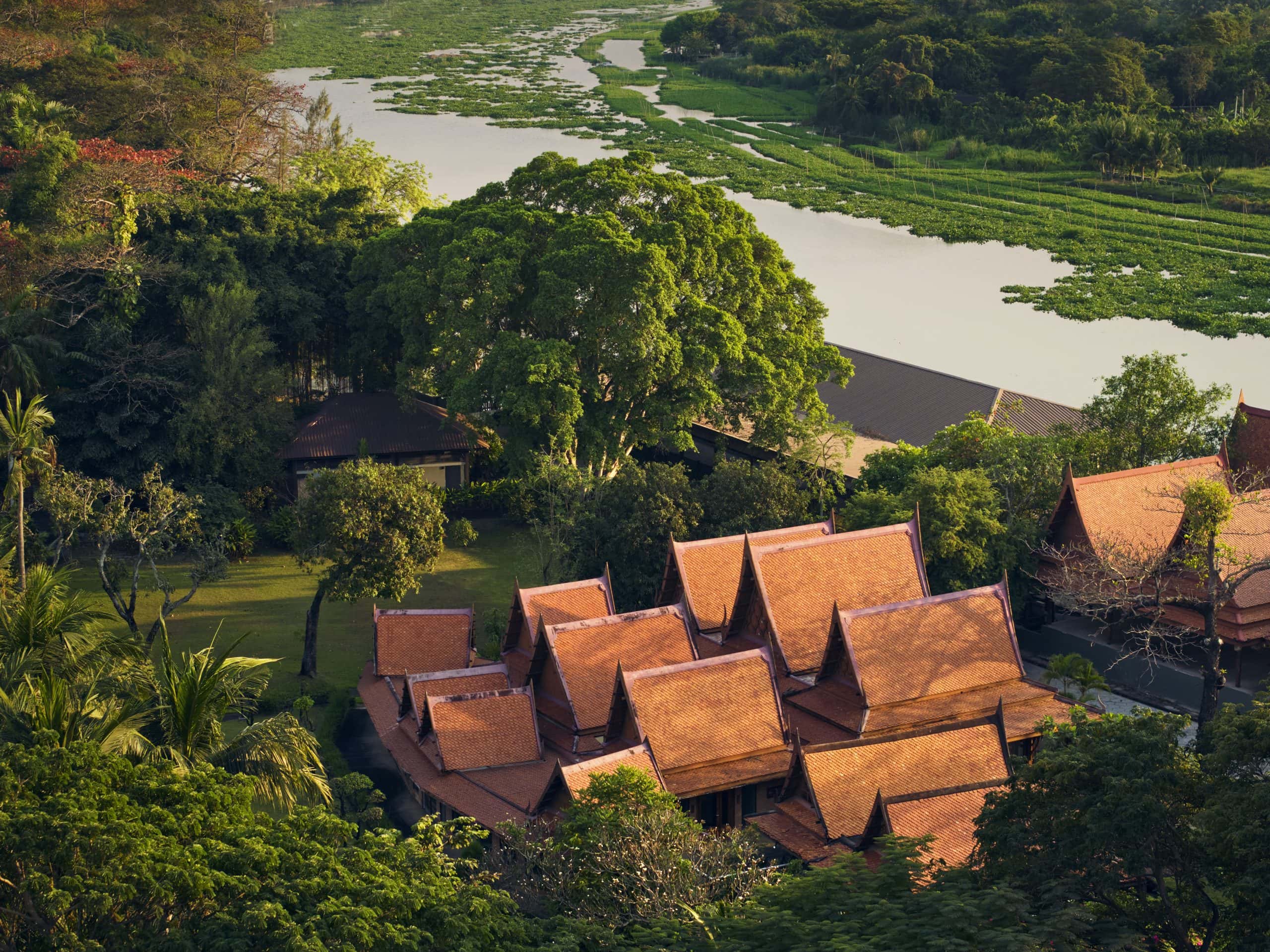A natural athlete, Nadir Thami has always been into sport. What began as a way to burn off energy as a kid has become a career, going from strength in martial arts like judo, Taijutsu, Brazilian Jiu-Jitsu (BJJ), Muay Thai, boxing, kickboxing, and Mixed Martial Arts (MMA). Still a competitive fighter, Belgian-born, Hong Kong-based Thami now works with Hybrid MMA in Central, Hong Kong, training adults and children in martial arts and fitness to help them build confidence and healthy lifestyle habits. Compare Retreats Chief Content Officer Rebecca Cairns joined him for a Muay Thai workout session and spoke with him about misconceptions about martial arts and the mental, physical and emotional benefits of keeping fighting fit.

How did you get into martial arts? Near my home, we had a judo club, and my mum used to take me there from the age of four. At six I started doing competitions until I was 12, and then I quit to play soccer. I was bullied by the team captain, and what happened? I fought him, and because of judo, I won. Everyone became friends with me then. I decided to go back to judo, and then, I started taijutsu. I started sports school, and was doing soccer, basketball, volleyball, gymnastics, and swimming every week, teaching kids, and doing my martial arts on the side. I came to Muay Thai late: I only discovered it when I was 19. I was working two jobs, I was a seller and working in a bar, and trained Muay Thai in my spare time. My coach kept asking me to fight, but I told him I didn’t have the time. Then, I got a promotion and so I had two salaries in one job: so I said, now is the time.
The most important thing to remember, in the ring, in training, it’s not personal… We don’t learn martial arts to beat someone; we learn martial arts to fight ourselves.
Nadir Thami
You do various types of martial arts—what’s the difference between them all? I learnt judo, taijutsu, BJJ, Muay Thai, boxing, kickboxing, and then MMA. The mindset is the same for all martial arts: discipline, focus, order. But they all feel different: BJJ, its like weight lifting, when I do Muay Thai it’s like running. There is also a difference in control, and defending yourself. You attack of course, in BJJ, but it’s more like a defence—if I was attacked on the street, I would use BJJ instead of Boxing or Muay Thai because I’d have no trouble explaining to a judge why I used the more defensive martial art, rather than something like Muay Thai which is designed for attack. I think BJJ can be really great for women to learn because its a sport that helps you defend against someone bigger and heavier than you. Another difference is the strategy: kickboxing has more strategy than boxing, and Muay Thai has more strategy than kickboxing. MMA has the most strategy because you’re mixing everything together.
See also: How Professional MMA Fighter Ramona Pascual Deals With Setbacks
What are the physical, mental and emotional benefits of martial arts? For the physical benefits, in all martial arts, you have strength, agility, coordination, cardio. Mentally, it teaches you discipline, self-control, self-confidence, focus, concentration. For me as well, it’s something else, a kind of therapy to work out things. We have a saying that, when you touch the anger or the rage, it’s already too late. When we work with kids in boxing classes, we teach them how to control anger and put it into something else.

How does participating in competitions change the way that you workout? That was my in: the door was opened. I was training, but I wasn’t pushing myself. Then, after my first fight, I was coming back to work on my mistake and weakness, and then I started to work like crazy. I was working in the day, 7am to 7pm, and then training before and after work four hours a day—it gives you something to work towards.
See also: The Best Boxing Bootcamps For Wellness Warriors
What is the biggest misconception people have about martial arts? People think it’s about anger and rage. It’s not. The most important thing to remember, in the ring, in training, it’s not personal. Don’t forget, this is your friend you are fighting, and your friend is going to help you become better in your discipline. You need to learn how to control yourself. We don’t learn martial arts to beat someone; we learn martial arts to fight ourselves. It’s you versus you.
We have a saying that, when you touch the anger or the rage, it’s already too late. When we work with kids in boxing classes, we teach them how to control anger and put it into something else.
Nadir Thami
What advice would you give to people looking to achieve their fitness goals within a three month period? I recommend to follow someone, to follow a coach. It’s really important, if you don’t know what you’re doing, they’ll make a programme to follow. She doesn’t know what you’re doing. It’s really important to follow a coach. If you’re someone who has never trained before, versus someone who has maybe done a bit of training on and off, or just started back up, you’ll start in different places. And don’t forget to rest and get massages, recovery is so important.
What is an interesting routine that you do daily that sets you up for success? I like to wake up slowly, I do my cardio in the morning—I feel my day starts well when I do. At night, I do my stretching, my meditation, and my massage. I try to do it every day, my motto is hard work and good rest; positive vibes, and no expectations.



